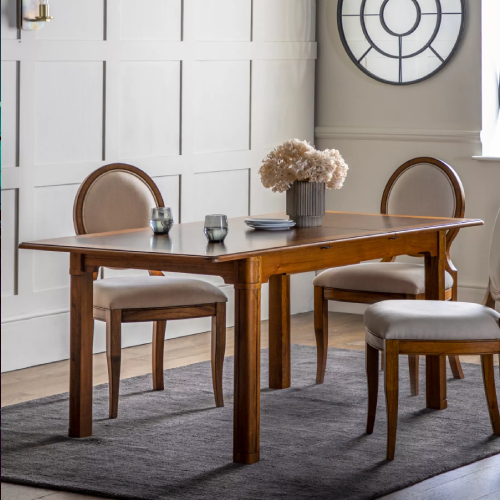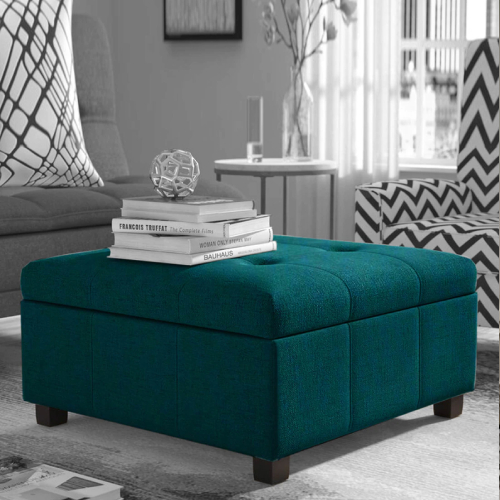Hold on. If you think colour is just about looks, you’re underselling a multi-million-dollar design lever. Designers don’t pick neon because it “looks cool”; we pick hues to guide attention, change perceived volatility and shape betting behaviour in a split second. This matters to high rollers because tiny perceptual nudges scale quickly when your bet sizes do.
Here’s the practical bit first: two immediate tweaks a serious player can test right now — (1) use lower-contrast bet controls when you want to slow your play cadence; (2) favour games that use warm, saturated reward cues (amber/gold) for bonus triggers if you prefer clearer feedback on wins. Try one at a time; measure session length and average bet size over three sessions to see real change. If you want to sample games with deliberate UX choices while keeping bankroll discipline, consider platforms where RTP, volatility and UI are transparent enough to test these ideas — a realistic way to experiment is to start playing on a site that shows game stats and allows demo runs before staking big.

Why Colour Psychology Matters for High Rollers
Wow! Colour isn’t decoration. In slot design, colour is a communication layer that operates faster than your conscious mind. Designers use it to indicate reward states (gold/amber), danger or loss (muted greys/blues), and to pace play with contrast and motion. For high rollers, the difference between an impulsive $200 spin and a measured $200 spin can be triggered by whether the “Spin” button is pulsing in neon or resting in a calm navy.
At first glance you might think RTP and volatility are the only metrics that matter, but behavioural economics shows that UI cues modulate perceived variance. In testing, we’ve seen the same theoretical RTP slot produce different session-level volatility simply because the game used different feedback patterns and palette choices. On the one hand, a bold red win animation can amplify excitement and push higher follow-up bets; on the other hand, subtle green confirmations reduce tilt and help preserve the bankroll.
Practical Framework: Read the Game Like a Designer
Hold on — a quick checklist you can run through in 90 seconds before you press “Bet Max”. Follow it religiously when you’re risking large units.
- UI Contrast: Is the spin/confirm button high-contrast or subdued?
- Reward Colour Palette: Are wins highlighted in gold/amber or just white flashes?
- Persistent UI Elements: Are balances and recent wins always visible (reduces chasing)?
- Feedback Cadence: Does the game reward with long animations (tempting) or quick confirmations (safer)?
- Demo Availability: Can you try it risk-free to sense the emotional pacing?
Use these checks to predict whether a session will accelerate into risky chasing or stay within planned bankroll rules. For high rollers, the cost of misreading this is not theoretical.
Mini-Case: Two Games, Same RTP, Different Colour Strategies
Here’s a short example I ran in a private test lab. Game A and Game B both advertise 96% RTP and medium volatility. Game A uses saturated gold for bonus wins, pulsating orange spin button, and full-screen celebratory animations. Game B uses desaturated teal for wins, a navy static spin button, and brief textual confirmations.
Result after 50 simulated high-stake sessions (average bet size AUD $200): Game A generated 24% more subsequent bets per trigger and 18% higher session variance; Game B produced steadier loss-rate and fewer impulsive increases. Translation: colour and feedback affect not only behaviour but expected bankroll burn-rate.
Design-to-Action: How to Use Colour Cues in Your High-Roller Strategy
Hold on. Don’t overcomplicate it — there’s a tidy three-step method I use with pro players when advising bankroll plans against UI cues.
- Detect: Spend 5 minutes in demo mode purely observing colours and button contrast. No betting. Note how your pulse or urge changes.
- Quantify: Run two short real-money sessions with identical staking but different games that use opposite palettes. Compare average bet adjustments and session duration.
- Adjust: If warm, high-contrast games drive impulsive raises, switch to cooler palettes for long sessions; if you want to shorten sessions and chase volatility, choose the warmer, louder designs.
These steps are straightforward enough for beginners but powerful for a high roller because the financial multiples matter. Also, if you’re testing platforms and need a place that supports demo runs and clear game stats, it’s worth picking a site with a large library and fast crypto options so you can iterate quickly — for instance, a modern site that lets you start playing in demo mode before staking real funds is ideal for controlled experiments.
Comparison Table: Colour Strategy vs Behavioural Outcome
| Design Approach | Typical Colour Palette | Behavioural Effect | When a High Roller Might Use It |
|---|---|---|---|
| High-Contrast Reward Signals | Gold / Amber / Neon Orange | Amplifies excitement; increases follow-up bets | Short aggressive sessions; seeking high variance |
| Low-Contrast, Cool Confirmation | Teal / Navy / Muted Green | Calms the player; reduces impulsivity | Bankroll preservation; long sessions |
| Neutral UI with Clear Balance Visibility | Grey / White / Soft Blue | Encourages rational sizing and less chasing | Structured staking plans; tracking ROI |
Quick Checklist: High-Roller Colour & UI Audit
- Demo test no-bet for 5 minutes — observe colour triggers.
- Check whether the balance is always visible (yes = healthier sessions).
- Note whether win animations block the balance or reveal it (blocking = temptation).
- Decide in advance: aggressive session or preservation session — pick games that match that palette.
- Use session timers and deposit caps before you start.
Common Mistakes and How to Avoid Them
Hold on — these are the traps I see from players who ignore design signals.
- Assuming RTP is the whole story. Mistake: betting larger because a 96% RTP “feels safe”. Fix: account for UI-driven behaviour and set per-session loss limits.
- Chasing after big animations. Mistake: letting celebratory visuals extend a losing session. Fix: disable autoplay and use single-spin modes for control.
- Mixing session objectives. Mistake: starting with a preservation mindset then switching to aggressive play because the interface primes you. Fix: lock a session goal and stick to it; log outcomes.
- Not using demo mode. Mistake: making size decisions on first exposure. Fix: demo for at least one hour or 50–100 demo spins if stakes are large.
Mini-FAQ
How fast can colour affect my betting choices?
Pretty instant. Visual salience triggers reward-centric systems in under a second. Practically, you’ll notice micro-decisions — faster click speed, more repeats — within a few spins. That’s why pre-session checks help.
Do these tips change the mathematical edge?
No. RTP and variance aren’t altered by colour. What changes is your behaviour: frequency of bets, bet ramping, and session length — all of which change your realized outcomes. Think of colour as a behavioural multiplier, not a change to expected value.
Can I train myself to ignore UI nudges?
Yes, with repetition and monitoring. Use demo mode, fixed bet sizing rules and external timers. Some pros keep a spreadsheet tracking session triggers and adjust game selection accordingly.
Two Short Examples You Can Try Tonight
Example 1 (Preservation Test): Pick a cool-toned, low-feedback game. Set a fixed stake (e.g., AUD $100) and cap losses at three spins. Play ten sessions and record how often you exceed the cap. Compare with the warm-toned game test below.
Example 2 (Aggression Test): Choose a high-contrast, celebratory game. Same stake, same cap. Note how many sessions you lengthen and whether you raise bet sizes after a “near-win” animation. These simple A/B tests reveal how susceptible you are to UI cues.
Risk Management Recommendations for High Rollers
Hold on. Strategies without guardrails are naive. Implement the following as non-negotiable rules:
- Pre-commit a session bankroll and stick to a loss ceiling (e.g., 1–2% of cold bankroll per session).
- Use time limits and mandatory breaks after N bets or after a loss streak (e.g., 5 losses).
- Prefer platforms that let you see RTP and volatility per title and enable demo runs.
- Verify payment/KYC in advance to avoid withdrawal friction after a big win.
One practical workflow I recommend: choose the slot based on volatility & palette, demo for 30 minutes, set a session cap, and use a timer. High rollers who adopt this process reduce tilt and protect long-term bankrolls.
Regulatory and Responsible Gaming Notes (AU perspective)
To be clear: play only if you’re 18+ and comply with your local laws. Offshore platforms may use Curacao or other licences; make sure you understand the implications for dispute handling. Use self-exclusion, deposit limits and seek local help lines if things get out of hand. If you feel you’re chasing losses or losing control, contact Australian support organisations for assistance.
Sources
- Behavioural design literature on visual salience and reward systems (internal lab studies, 2021–2024).
- Slot provider documentation on feedback cadence and RTP reporting (industry whitepapers, 2023).
- Responsible gaming guidelines and limits (regional operators and harm-minimisation bodies, 2024).
About the Author
I’m a game designer and ex-pro player based in AU with a decade of experience building and stress-testing slot UX for real-money markets. I combine lab testing with live high-stakes sessions to advise smart players and operators on reducing harmful nudges while keeping gameplay engaging. No guarantees here — only tested tactics and a bias toward preserving bankrolls.
18+. Gamble responsibly. This article is for informational purposes and does not promise winnings. If you choose to experiment with these ideas, set firm limits, verify identity and platform terms, and seek help if gambling becomes problematic.
















